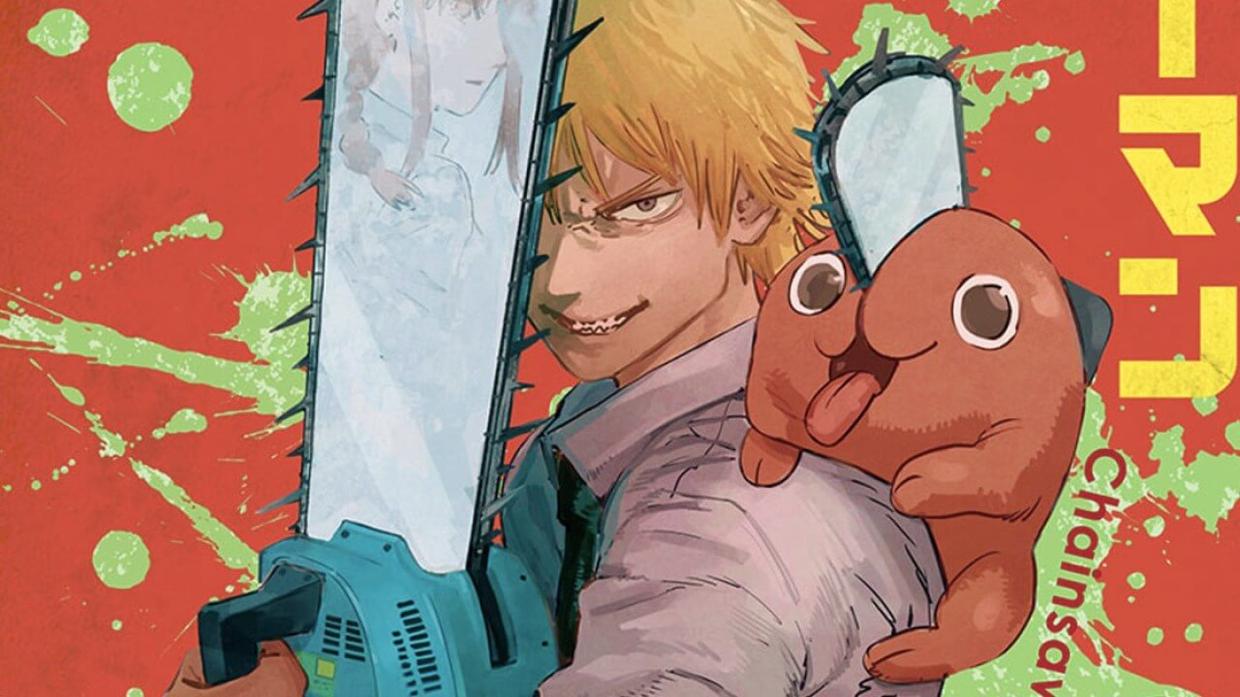Introduction
Chainsaw Man has quickly become a phenomenon in the world of anime and manga. Created by the brilliant Tatsuki Fujimoto, Chainsaw Man introduces readers and viewers to a unique blend of action, horror, dark humor, and profound emotional depth. Originally a manga serialized in Weekly Shonen Jump in 2018, the series quickly gained a loyal following. Its transition into an anime series in 2022, produced by MAPPA, further solidified its popularity, garnering millions of fans worldwide.
At its core, Chainsaw Man is a story about Denji, a young man who struggles to make ends meet by working as a Devil Hunter to pay off his late father’s massive debt. However, his life takes a dramatic turn when he is killed by a Devil, only to be resurrected as a half-human, half-Devil hybrid with the ability to transform into a literal chainsaw. This unique premise, paired with exceptional world-building and morally complex characters, sets Chainsaw Man apart from other shonen titles. As it dives into the dark corners of human desires, survival, and morality, it leaves viewers questioning the price of ambition and the pursuit of dreams.
The anime adaptation, with its stunning visuals and gripping soundtrack, brought the manga’s vibrant yet haunting world to life. The unique narrative style and emotionally charged themes resonate with audiences of all ages. But beyond its violent action and thrilling moments, Chainsaw Man stands out for its ability to blend absurdity with profound reflections on life, death, and everything in between.
Plot and Setting
Chainsaw Man unfolds in a world teeming with Devils—manifestations of human fears. The setting is modern-day Japan, but with one major difference: Devils exist in the real world, preying on humanity’s most primal anxieties. These Devils take various forms, from grotesque monsters to symbolic figures, and they wreak havoc on society. To counter this, Devil Hunters are hired to exterminate these creatures.
Denji, the protagonist, is introduced as a poor, down-on-his-luck teenager burdened with his deceased father’s debt. His only companion is Pochita, a small Devil that can transform into chainsaw-like weapons. After Denji is tragically killed during a mission, Pochita sacrifices itself to save him, merging with Denji’s body and granting him the ability to transform into Chainsaw Man. This transformation catapults Denji into a violent world filled with dangerous Devils, government organizations, and hidden agendas.
As the story progresses, Denji’s life becomes even more complicated. He’s recruited by a government agency known as Public Safety, led by the enigmatic Makima, who manipulates Denji for her own purposes. Despite his chaotic new life, Denji’s motivations remain simple: he wants to live a life of comfort, indulging in his most basic desires like eating good food, dating a beautiful woman, and living in a nice house. But these simple pleasures come with a heavy price as he faces increasingly formidable Devils, including the infamous Gun Devil, who remains a central figure in the overarching narrative.
The world-building in Chainsaw Man is as brutal as it is fascinating. Fujimoto carefully crafts a setting where the constant threat of death looms over every character, and trust is a currency that’s never easy to come by.
Main Characters and Development

The heart of Chainsaw Man lies in its richly developed characters, each of whom plays a pivotal role in shaping the story’s themes. Let’s take a closer look at some of the key figures:
Denji
Denji’s character arc is one of the most compelling in modern anime and manga. He starts as a naive, almost pathetic individual whose main goal is to escape his crushing poverty. His desires are simple: to eat good food, own nice things, and experience the pleasures of life. However, Denji’s journey becomes one of self-discovery, as he grapples with his new identity as Chainsaw Man and faces the harsh realities of his dangerous world. Despite his crude nature and lack of formal education, Denji proves to be resourceful, resilient, and surprisingly empathetic. His evolution from an ordinary boy to a reluctant hero is central to the series’ emotional depth.
Makima
Makima, the mysterious and manipulative Public Safety officer, is one of the most enigmatic figures in Chainsaw Man. Her true motivations are shrouded in secrecy, and her ability to control others with both charm and fear makes her a dangerous adversary. Throughout the series, she manipulates Denji for her own agenda, exploiting his weaknesses while offering him the things he desires most. Her complex relationship with Denji serves as both a catalyst for his growth and a source of deep psychological tension.
Power
Power, a Devil-human hybrid, is one of Denji’s closest allies and one of the series’ most unpredictable characters. A demon with a short temper and an almost childlike sense of morality, Power adds both comedic relief and emotional depth to the series. Despite her brash nature, she forms a unique bond with Denji and becomes one of the most beloved characters in Chainsaw Man.
Aki Hayakawa
Aki, a seasoned Devil Hunter, serves as a mentor to Denji. Though initially cold and distant, Aki’s backstory and his tragic fate help flesh out the darker themes of the story, including the inevitable nature of death and sacrifice. His dedication to eradicating the Gun Devil is driven by personal loss, and his character arc underscores the cost of vengeance and obsession.
Themes and Symbolism in Chainsaw Man
One of the most striking aspects of Chainsaw Man is its exploration of deep and often unsettling themes, which are presented through the narrative, character arcs, and symbolic elements.
The Devil as Metaphor
Each Devil in Chainsaw Man represents a specific human fear or desire. The Gun Devil, for example, symbolizes the destructive power of firearms and war, while other Devils embody different aspects of the human psyche, such as lust, greed, and violence. These Devils are not just adversaries to be defeated; they reflect the darker facets of society and humanity, offering a thought-provoking critique on the fears that govern us.
Human Desires and Morality
At its core, Chainsaw Man is about the clash between the mundane desires of its characters and the horrific world they inhabit. Denji’s obsession with simple pleasures like food, sex, and wealth reflects humanity’s pursuit of fleeting happiness, often at the cost of deeper emotional fulfillment. The story also delves into the question of what people are willing to sacrifice to achieve their desires, and whether the pursuit of happiness is worth the toll it takes on one’s soul.
Death and Consequences
Death is a constant theme in Chainsaw Man, and no character is safe. The series doesn’t shy away from portraying the harsh realities of a world where violence and death are routine. The high stakes of the narrative make each death meaningful, forcing characters to confront the consequences of their actions and their inability to escape the cycle of violence.
- Animation and Art Style
The Chainsaw Man anime adaptation by MAPPA has been lauded for its high-quality animation, which effectively captures the chaotic energy and emotional weight of the manga. The animation seamlessly blends grotesque horror with moments of absurd comedy, maintaining a balance between visceral action and character-driven storytelling. MAPPA’s use of fluid, fast-paced action sequences enhances the intensity of the fight scenes, while the darker moments are visually stark and unsettling.
Fujimoto’s unique manga art style, characterized by detailed line work and dynamic panel layouts, carries over into the anime adaptation, preserving the original’s tone while elevating it with animation. The character designs are both memorable and unconventional, adding a layer of charm to even the most terrifying Devils. The music and voice acting further enhance the anime’s immersive experience, providing an emotional backdrop that complements the narrative’s shifting moods.
Cultural Impact and Popularity
Chainsaw Man has had a profound impact on the anime and manga landscape. Its unorthodox storytelling, dark themes, and complex characters have made it a standout title in a crowded market. Fans have embraced its unpredictable narrative, which defies conventional tropes, and its characters, who are morally ambiguous yet deeply relatable.
The anime’s release in 2022 brought Chainsaw Man to a global audience, introducing it to viewers outside Japan. The series quickly amassed a dedicated fanbase, resulting in vibrant online communities, fan art, and discussions. Merchandise, including action figures and apparel, has also flooded the market, contributing to the franchise’s cultural reach.
Compared to other popular anime like Attack on Titan and Jujutsu Kaisen, Chainsaw Man offers a distinct narrative tone—one that balances nihilism with moments of levity. Its unconventional storytelling has cemented its place as a modern classic.
Conclusion
Chainsaw Man is not just another action-packed anime. It is a series that explores the human condition through the lens of horror, fantasy, and dark humor. The complex characters, brutal world-building, and thought-provoking themes make it a standout title that challenges conventional narratives. As the anime continues to gain popularity and the manga moves toward its conclusion, Chainsaw Man will undoubtedly remain a cornerstone of modern anime, leaving a lasting impact on both fans and creators alike.
FAQs
What is Chainsaw Man about?
Chainsaw Man follows Denji, a young man who merges with his pet Devil, Pochita, to become a half-human, half-Devil hybrid. He becomes a Devil Hunter, battling powerful Devils to survive in a brutal, dangerous world.
How does Denji become Chainsaw Man?
Denji is killed by a Devil but is resurrected when Pochita sacrifices itself to merge with him, granting Denji the ability to transform into Chainsaw Man.
What are the key themes of Chainsaw Man?
Chainsaw Man explores themes like human desires, power, greed, morality, and the consequences of violence and death.
How does the anime adaptation compare to the manga?
The Chainsaw Man anime faithfully adapts the manga, with stunning visuals, high-quality animation, and a strong emotional impact. It captures the manga’s chaotic energy and depth.
Who are the main characters in Chainsaw Man?
Key characters include Denji, Makima, Power, and Aki. Each has a distinct personality and plays a pivotal role in Denji’s journey.
Is Chainsaw Man appropriate for younger audiences?
Chainsaw Man contains graphic violence, mature themes, and dark humor, making it unsuitable for younger audiences.
What is the significance of Pochita in Denji’s journey?
Pochita is Denji’s loyal companion and plays a crucial role in his transformation, symbolizing the bond between Denji and his Devil side.
How many seasons of Chainsaw Man are planned?
As of now, the first season of the anime has aired, with further seasons expected depending on the manga’s progression and reception.
What is the future of Chainsaw Man in terms of manga and anime releases?
The manga is nearing its conclusion, while the anime continues to expand its reach. Fans can expect more action-packed episodes and new character developments in the coming seasons.
You May Also Read:https://booksnews.co.uk/life-skills/




